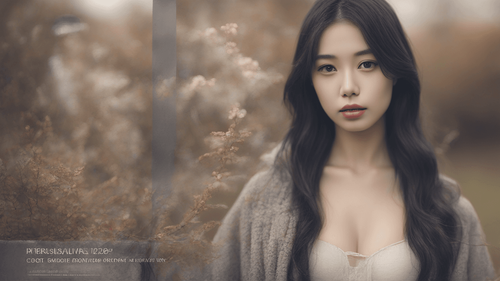
Introduction: A Glimpse into the Future of Synthetic Imagery
In an era defined by rapid technological advancements, the field of artificial intelligence has birthed a groundbreaking innovation: the Deepfake Picture Generator. This marvel of modern AI brings to life the concept of creating hyper-realistic synthetic images that challenge the boundaries of reality and creativity. In this comprehensive article, we delve deep into the mechanics, applications, and implications of deepfake picture generators, shedding light on both their remarkable potential and the ethical considerations they raise.
Understanding Deepfake Picture Generators: Unraveling the Algorithmic Artistry
Exploring the Core Concepts of Deepfake Technology
At its core, a deepfake picture generator employs advanced machine learning algorithms to manipulate and generate images that convincingly mimic reality. Leveraging techniques such as Generative Adversarial Networks (GANs), these generators can seamlessly blend features from different sources to create entirely new visuals.
Behind the Curtain: How Deepfake Picture Generators Work
Deepfake generators operate through a multistep process involving data collection, training, and synthesis. Initially, vast amounts of visual data are fed into the algorithm, allowing the AI to learn intricate details of facial expressions, gestures, and other visual nuances. Subsequently, the generator refines its understanding through iterative training, adjusting its parameters to produce more lifelike outputs.
The Art of Deception: Realism vs. Distortion
Achieving photorealism while avoiding uncanny valley territory is a delicate balancing act. Deepfake generators must navigate the fine line between producing highly convincing images and straying into the realm of distortion. This artistic challenge drives the ongoing refinement of these technologies.
Applications of Deepfake Picture Generators: From Artistry to Practicality
Revolutionizing Visual Art and Design
Deepfake picture generators are breathing new life into the world of visual art. Artists and designers are harnessing these tools to create surreal, mind-bending masterpieces that challenge conventional perceptions of reality. The ability to blend diverse elements seamlessly opens doors to uncharted artistic horizons.
Entertainment Redefined: Deepfakes in Film and Media
The entertainment industry has embraced deepfake technology to resurrect historical figures on screen, seamlessly integrating them into narratives. This fusion of technology and creativity allows for the portrayal of fictional scenarios that blur the lines between imagination and reality.
Training AI: Augmenting Machine Learning Datasets
Beyond artistic endeavors, deepfake picture generators play a pivotal role in enhancing machine learning datasets. These generators facilitate the creation of synthetic data for training AI models, accelerating the development of technologies like facial recognition and emotion detection.
Ethical Contemplations: Navigating the Deepfake Dilemma
The rapid evolution of deepfake picture generators has sparked ethical debates that demand thoughtful consideration. As these tools become more sophisticated, the potential for misuse and deception raises concerns about privacy, misinformation, and consent.
FAQs: Demystifying Deepfake Picture Generators
What Are Deepfake Picture Generators?
Deepfake picture generators are AI-driven tools that utilize advanced algorithms to create realistic synthetic images by blending and modifying existing visual data.
Are Deepfake Picture Generators Legal?
The legality of deepfake picture generators varies by jurisdiction. While creative and artistic use often falls within legal boundaries, malicious intent or deception may lead to legal repercussions.
How Can Deepfake Technology Benefit Society?
Deepfake technology can bolster various sectors, including entertainment, art, and AI training. Its potential to enhance creativity and advance machine learning makes it a valuable tool for societal progress.
What Are the Risks Associated with Deepfake Images?
Misuse of deepfake images can lead to misinformation, privacy violations, and identity theft. The technology's potential for creating convincing hoaxes raises concerns about digital trustworthiness.
How Can We Mitigate the Negative Impact of Deepfake Technology?
Addressing the downsides of deepfake technology requires a multi-pronged approach involving technological safeguards, media literacy education, and ethical guidelines for its application.
What Does the Future Hold for Deepfake Picture Generators?
The future of deepfake picture generators is characterized by continued innovation and refinement. Striking a balance between artistic exploration and responsible use will shape the trajectory of these transformative tools.
Conclusion: Embracing the Evolution of Visual Expression
As we conclude this exploration of the captivating world of deepfake picture generators, it's evident that these AI-driven creations have ushered in a new era of visual artistry and technological ingenuity. The fusion of human creativity and algorithmic precision has birthed a powerful medium that challenges conventional boundaries, offers new avenues of expression, and prompts us to engage in critical dialogues about ethics and responsibility. As we move forward, embracing the evolution of visual expression, let us tread with mindfulness, harnessing the potential of deepfake picture generators for the betterment of society and the enrichment of human creativity.